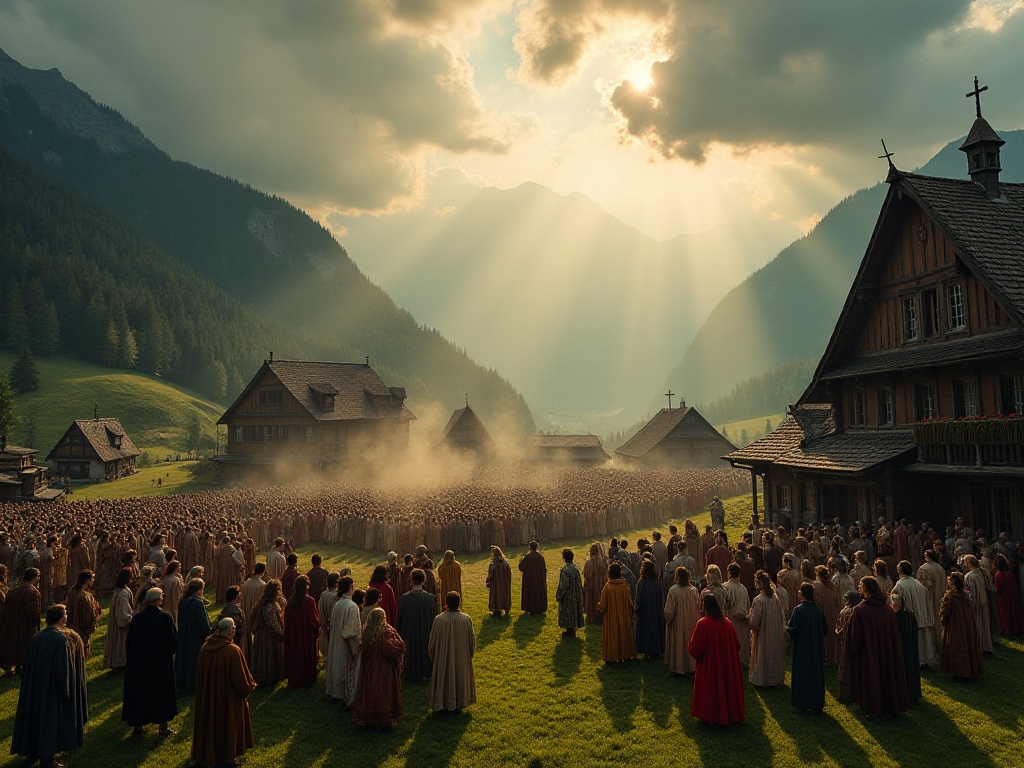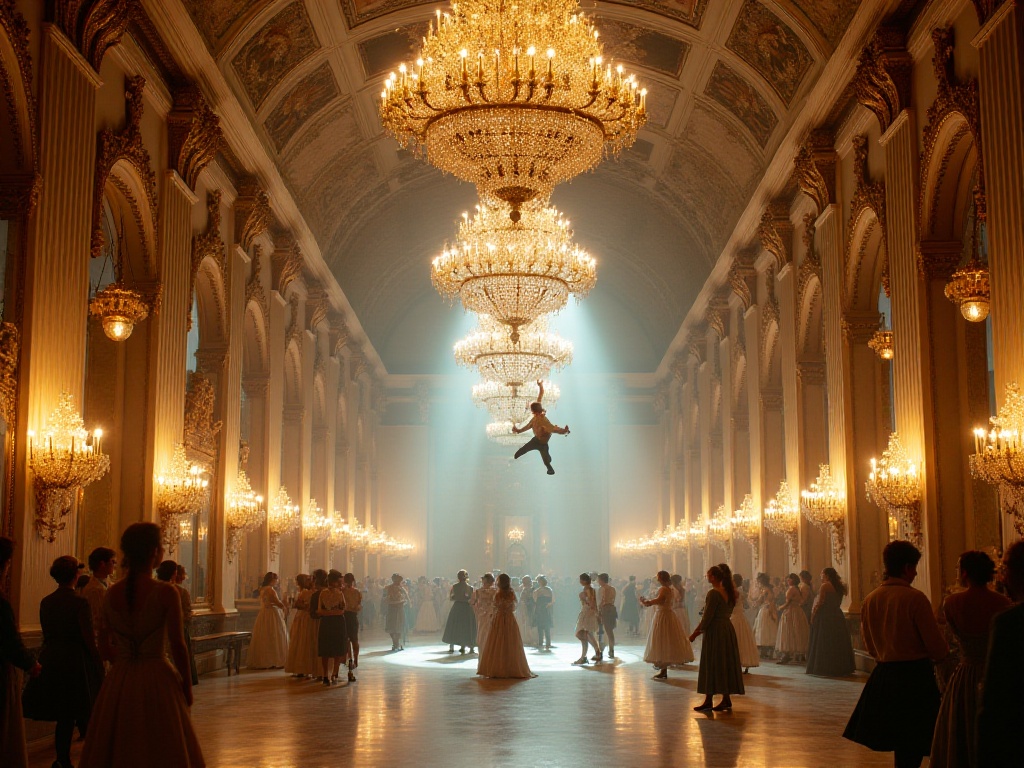Opening Thoughts
As someone born after 1995, I always thought religious festivals were just a bunch of complicated rituals and rules, until I started traveling around the world and realized how terribly wrong I was. These festivals are actually the best gateway to understanding world cultures! Whenever I visit a place during their religious festivals, I get the most authentic cultural experience. Today, let me take you to explore some of the most stunning religious festivals around the world and see just how incredible these centuries-old or even millennium-old events really are!
The German Miracle
Honestly, before learning about the Passion Play in Oberammergau, Bavaria, Germany, I couldn't imagine a village of just over 5,000 people could create such a spectacle. This performance is like Germany's version of the "Spring Festival Gala," but it only happens once every ten years!
Imagine this: over 2,000 villagers voluntarily participating in a 5-hour-long play - what kind of dedication is that? I witnessed the performance last year, and it was absolutely overwhelming! Though none of the villagers are professional actors, their performance level is absolutely top-notch! Everyone completely immersed themselves in their roles, as if they had truly traveled back to Jerusalem 2,000 years ago.
What amazed me most was the origin of this event. In 1634, nearly 400 years ago, this small village made a promise to God to escape a disaster: if they survived, they would perform the Passion of Christ every ten years. True to their word, these Germans have kept their promise, maintaining this tradition to this day.
A year before each performance, the men in the village start growing their hair and beards to better recreate the historical scene. The actor selection process is also particularly strict, considering not only acting ability but also moral character. The person playing Jesus faces even more pressure, needing both solid acting skills and physical strength, as they have to carry a cross weighing dozens of pounds for several hours.
The entire performance takes place in a massive outdoor theater that can accommodate over 4,700 spectators. The stage design is also incredibly thoughtful, with the natural scenery of the Alps as the backdrop, combined with excellent props and costumes, creating a real audiovisual feast. The performance is divided into two parts, with a three-hour break in between, allowing audience members to have a proper meal and digest the first half's content.

The Indian Gathering
If Germany's Passion Play is small but refined, then India's Kumbh Mela is massive and spectacular. This super-festival, held every 12 years, is so large in scale it's breathtaking. Can you imagine what it looks like when 120 million people gather in one place? I certainly couldn't, until I experienced this grand gathering last year.
The Kumbh Mela is held in North Allahabad, specifically at the confluence of three rivers: the Ganges, Yamuna, and the mythical Saraswati. Hindus believe that bathing here can wash away sins from previous lives and grant rebirth. So during the festival, devotees from all over India flock to this location.
The festival lasts 48 days, but the most important is the full moon bathing day. That day at 3 AM, I was awakened by the noise outside. When I walked out of my tent, my goodness! Countless people had already lined up along the riverbank, waiting for the first bath at sunrise. Thousands of temporary tents were set up along both sides of the river, forming a temporary tent city.
What shocked me most were the sadhus. Some stood motionless in meditation, others practiced yoga while standing on their heads, and some went without food or water for days. They believe these ascetic practices can lead to spiritual elevation. While I may never fully understand their faith, their devotion is truly admirable.
Security during the festival is also a massive undertaking. Police, doctors, and volunteers work in 24-hour shifts to ensure the event runs safely. Most impressive is that they set up countless temporary toilets and trash bins along the river to maintain environmental hygiene. Despite the massive crowds, the site remains orderly, which is truly remarkable.

The African Surprise
When people think of Africa, many first think of lions and giraffes. But Ethiopia's Timkat festival will definitely change your perception of Africa. This celebration of Jesus's baptism is absolutely a visual feast.
Last January, I participated in this festival in the small town of Lalibela, Ethiopia. Lalibela is a town built on a mountain, famous for its rock-hewn churches. On the morning of Timkat, the entire town was shrouded in a mysterious atmosphere.
Tens of thousands of faithful, dressed in white robes and holding candles, begin their procession at dawn. Their procession stretches for kilometers, winding from the mountaintop to the foot. The candlelight flickers in the dawn, accompanied by traditional drumbeats and hymns, creating a solemn and sacred scene.
The most exciting part is the search for the golden cross. Local priests drop a golden cross into a pool, and then young people jump into the cold water to find it. Despite the cold water, participants' enthusiasm never diminishes. The person who finds the cross is believed to be especially lucky in the coming year. Last year, a 16-year-old boy found the cross, and when he raised it, the surrounding crowd erupted in thunderous cheers.
The festival food is also a highlight. Locals prepare special festival dishes, like injera bread made from fermented teff flour, served with stews seasoned with various spices. Though the flavors might be strong for us, they're definitely unique.

Reflections
Through years of travel and experience, I increasingly feel that religious festivals are like mirrors, reflecting the most authentic aspects of human civilization. In these festivals, we can see the differences between cultures, but more importantly, we can feel the common aspirations and pursuits in human nature.
The Germans' precision and persistence are reflected in their unwavering dedication for nearly 400 years; the Indians' inclusiveness and grandeur are demonstrated in their ability to accommodate hundreds of millions of pilgrims; and the Ethiopians' passion and devotion are conveyed through their songs and dances to every visitor.
These festivals tell us that faith isn't a distant concept; it exists in ordinary people's daily lives. Whether it's the carpenter in a German village, the merchant on an Indian street, or the farmer in the Ethiopian highlands, they are all interpreting the meaning of faith in their own ways.

Final Thoughts
Every time I attend these religious festivals, I wonder: in this fast-paced era, can these traditional festivals maintain their original charm? But whenever I see young people seriously participating, I believe these cultural heritages will continue to be passed down.
For example, in Germany, many young people specifically take time off to return to their village for rehearsals; in India, many young people bring their parents to participate in the Kumbh Mela; in Ethiopia, young people see Timkat as a stage to show their courage. All these indicate that traditional culture has found its way to survive while keeping up with the times.
So, if you're also interested in these mysterious religious festivals, take some time to experience them yourself. I'm sure you'll find unexpected surprises. In the next issue, we'll talk about unique ethnic festivals around the world, taking you to experience more fascinating folk cultures!


